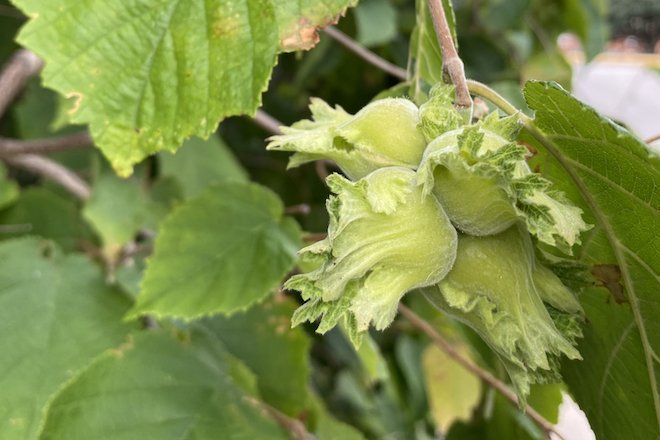This week: Native Shrubs You Can Eat
Hello!
So often, we’re planting native shrubs for insects and birds to eat. But many can be eaten by humans, too. Here are a few native shrubs that are tasty enough to snack on if you can beat the wildlife to it!
Elderberries

Common Elderberry (Sambucus canadensis) is an excellent addition to an edible garden because so many parts of it have uses. The flowers can be collected and made into an elderflower liqueur (like St-Germain). The berries can be made into jams, jellies, and pies (always cook them—raw berries have unpleasant-to-dangerous side effects). Elderberries are also a homeopathic remedy for immunity support. Plus, you can even use the cane for weaving!
Highbush Blueberries

Highbush Blueberry (Vaccinium coryumbosum) is the perfect plant for brilliant fall foliage and bringing in the birds with their fruits. But most people plant them to eat them out of hand or turn them into pies and jellies. Site preparation is key for a harvest rather than just a handful. Aim for full sun, get a soil test from your state extension service, and adjust your soil’s pH accordingly.
Pawpaws

Few fruits are as trendy as the Pawpaw (Asimina triloba). The tropical-tasting mango-shaped fruit ripens in September and October. Native Americans domesticated Pawpaws before European colonization, and they were a popular fruit in America through the first half of the twentieth century. Presidents George Washington and Thomas Jefferson both planted Pawpaw trees, and they were a food source for Lewis and Clark’s traveling party. Pawpaw trees are perfect for a forest’s edge and can even be grown in the shady understory.
American Hazelnuts

American Hazelnut (Corylus americana) is a beautiful landscape shrub that produces nuts that taste similar to European Hazelnuts. The main difference between the two is that American Hazelnuts are smaller. They can be roasted and eaten as a snack, pressed to make oil, or ground into nut butter (Nutella, anyone?).
Plant Two or More for Food Production
If you are planting to attract bees and butterflies, you might rely on self-pollination or cross-pollination from other plants in the neighborhood to produce fruit. However, when growing a crop, you’ll want to plant a pair of shrubs (or more) to ensure cross-pollination.
Elsewhere:
Celebrate Earth Day at Mt. Lebanon’s Main Park on Sunday, April 27, from 11 am to 3 pm. Blooms to Bees will offer freebies like native seed packets, bookmarks, and garden advice. I’ll also have garden journals, garden calendars, and guides for sale. Stop by and say hi!
Have a great week,
Julie